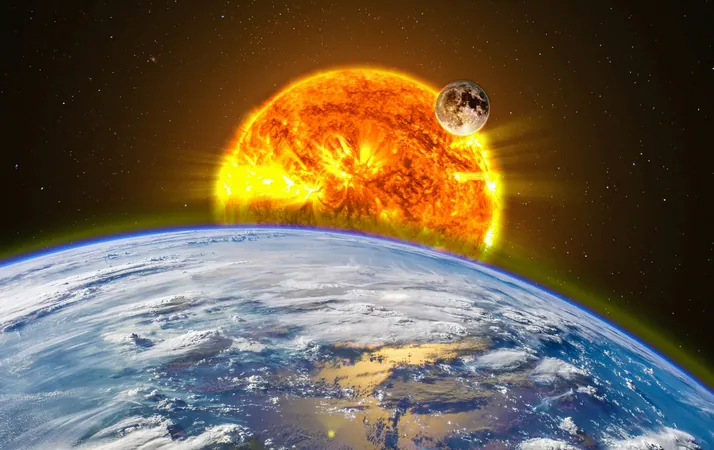
Are We Ready? The Next Major Solar Storm Could Darken Our Skies
2025-01-20
Author: Ling
Understanding Solar Storms
Solar storms are initiated by solar flares—intense bursts of energetic particles emitted from the Sun. When these charged particles hit Earth, they interact with our atmosphere, often resulting in spectacular auroras. However, this cosmic activity also poses serious risks to our technological infrastructure. Currently, experts warn that the ongoing solar cycle, projected to reach its peak intensity around 2025, could trigger more frequent and severe solar storms.
The Risks We Face
Prominent experts, including Dr. Kęstutis Ikamas from Vilnius University, have raised alarms about the vulnerabilities of extensive power networks, particularly in countries like the United States and Canada. He emphasizes that a significant geomagnetic storm could cripple essential services such as electricity, water supply, and telecommunications, leading to prolonged outages and logistical nightmares.
Historical precedents bolster these warnings. For example, the Carrington Event of 1859, a powerful solar storm, caused widespread failure of telegraph systems worldwide. Such technological disruption is more concerning today, with increased dependency on sophisticated systems. In recent times, a solar event in 2022 resulted in the destruction of 40 Starlink satellites, highlighting the modern implications of these natural phenomena.
A Growing Threat to Power Grids
Dr. Ikamas points out that the extensive length of electricity transmission lines makes them particularly susceptible to the effects of solar storms. A sudden influx of charged particles can create voltage fluctuations capable of damaging transformers and potentially blacking out entire regions. Despite the existence of protective systems for satellites and power grids, many are unprepared for the consequences of a substantial solar storm.
The National Oceanic and Atmospheric Administration (NOAA) uses a severity scale ranging from G1 to G5 to categorize geomagnetic storms, with higher levels indicating more severe potential disruptions to technology and infrastructure.
Effects Beyond Earth
The impacts of solar storms extend beyond our planet. Astronauts operating outside of Earth’s protective magnetic field face increased radiation exposure, compelling space agencies to adapt their schedules. Wildlife, especially migratory species, may also be affected, as notable shifts in navigation patterns have been observed during spikes in solar activity.
Global Collaboration Is Essential
Dr. Ikamas asserts that combating the threats posed by solar storms requires a coordinated international response. He advocates for collaboration among tech companies, utility providers, and governments to devise comprehensive protocols for sudden storm alerts. This preventive strategy echoes the concept of insurance; while the upfront costs for system upgrades may seem high, the potential economic fallout from a significant outage could run into trillions.
In a highly connected world, a disruption in one area can echo across continents almost instantaneously. Thus, failing to invest in robust grid enhancements today could pave the way for widespread chaos in the future.
The Rarity of Major Solar Storms
While it’s true that major solar storms are infrequent, the likelihood of a powerful event occurring within the next few years has generated increasing discourse among scientists, policymakers, and utility companies. As Dr. Ikamas advises, individuals should take simple precautions, like disconnecting devices during solar storm forecasts, to shield their electronics from damage.
With increasing solar activity on the horizon, the question remains: Are we genuinely prepared to face the storm? As experts reiterate, the time for action is now—before the darkness falls.





 Brasil (PT)
Brasil (PT)
 Canada (EN)
Canada (EN)
 Chile (ES)
Chile (ES)
 Česko (CS)
Česko (CS)
 대한민국 (KO)
대한민국 (KO)
 España (ES)
España (ES)
 France (FR)
France (FR)
 Hong Kong (EN)
Hong Kong (EN)
 Italia (IT)
Italia (IT)
 日本 (JA)
日本 (JA)
 Magyarország (HU)
Magyarország (HU)
 Norge (NO)
Norge (NO)
 Polska (PL)
Polska (PL)
 Schweiz (DE)
Schweiz (DE)
 Singapore (EN)
Singapore (EN)
 Sverige (SV)
Sverige (SV)
 Suomi (FI)
Suomi (FI)
 Türkiye (TR)
Türkiye (TR)
 الإمارات العربية المتحدة (AR)
الإمارات العربية المتحدة (AR)